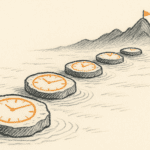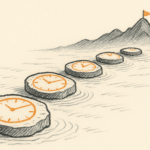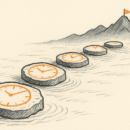Bricks or clicks, those who play for distinction win

Retail seems to be a tough business to be in right now, anywhere in the world. Consumers seem to prefer the convenience of online browsing and buying. They get things delivered to them rather than venture out into inclement weather and frustrating traffic; they curl up on couches rather than brave public transport. As online retail becomes easier and simpler from every smartphone, and payment options become smoother and more secure, those heavily invested in old-fashioned bricks and mortar face an uncertain future.
The carnage is real, across the world. In the United Kingdom, the big names are in big trouble. Marks and Spencer has announced plans to close another 100 mainline stores. Mothercare, Debenhams, House of Fraser and Arcadia Group are in significant distress. Toys ‘R’ Us actually collapsed.
In America the world’s largest retailer, Walmart, is reeling from the onslaught of Amazon (in market capitalization terms, one Amazon is now worth more than three Walmarts). The giant Sears group has been making mammoth losses for years. Across America, literally hundreds of “ghost” malls have been shuttered over the years.
Let’s bring the story back home to Kenya. Our two most dominant supermarket giants of the past few decades, Nakumatt and Uchumi, are both in a zombie state, leaving the market open to smaller players and foreign entrants. Here too, malls are opening at an insane pace; thus far, most of them are sitting empty as the expected footfall is yet to materialize. Meanwhile, as mobile ordering gets easier and payment systems more trusted, Kenyans are learning to shop online.
But wait: does this story simplify the causes of this distress? Is it just a case of the old being laid waste by the new? Not quite. In France, another global retail giant, Carrefour, is described by its own executives as “unfocused, unwieldy and stuck in old habits,” even a “headless chicken,” according to the Financial Times. It is criticized for being a late entrant to the e-commerce game. A new CEO is now formulating a turnaround plan focused on job cuts, robotics and a new partnership with Google.
And there’s the rub. Pain on malls and high streets isn’t just the consequence of the inexorable advances in technology and consumer trends. Many of the now-kneeling giants of retail have laid themselves low: through bad strategy, bad governance and bad customer experiences. And plenty of online-only upstarts also bite the dust, repeatedly.
What’s the flip-side of that truth? Physical retail is far from dead. If you play your cards right, online shopping can be a complement to in-person experiences – not their substitute.
A slew of retailers are showing us exactly that. There are still many shops that don’t seem to have any problems attracting the footfall, in most parts of the world. Look in any major mall: there will be a whole bunch of shops where the assistants are playing games (or shopping, perhaps) on their phones all day; and a small number where they are swept off their feet by shoppers.
That’s the essential lesson of business, played out again: success comes from doing things right, not from merely being present. Those retailers who play for distinction win – with bricks and with clicks. A recent PwC survey confirmed that 75 per cent of global consumers say they want more human interaction, not less. And a similar proportion say customer experience is more important than price, product quality or advertising when it comes to purchasing decisions.
And so, whether it’s in the shops or on personal screens, technology is only important if it improves shopping experiences. If an innovation makes things easier, better or more valuable for buyers, it wins. The future, as I keep writing on this page, is both analogue and digital. Those who know best how to meld the old and the new will keep winning.
Some will combine great, customer-centred cultures and ever-friendly people with new artificial-intelligence tech. Some will reduce friction in their supply chains using blockchains and smart contracts. Some will use advanced data analytics to predict demand patterns and trends and match products with people.
Global giants or local chains, those who understand that business is always about distinctiveness – whether delivered on handy smartphone screens or warm service in shops – will continue to move merchandise. The key lies in focusing that distinctiveness on what the customer feels and experiences. Bank that thought, and you’ll bank the returns as well.
(Sunday Nation, 1 July 2018)

Buy Sunny Bindra's new book
The X in CX
here »
Popular Posts
- The map will appear—once you start walking.July 6, 2025
- We’re letting the bad drive out the goodJuly 20, 2025
- The grace of the giverJuly 27, 2025
- Where are you rushing to—your funeral?June 29, 2025















